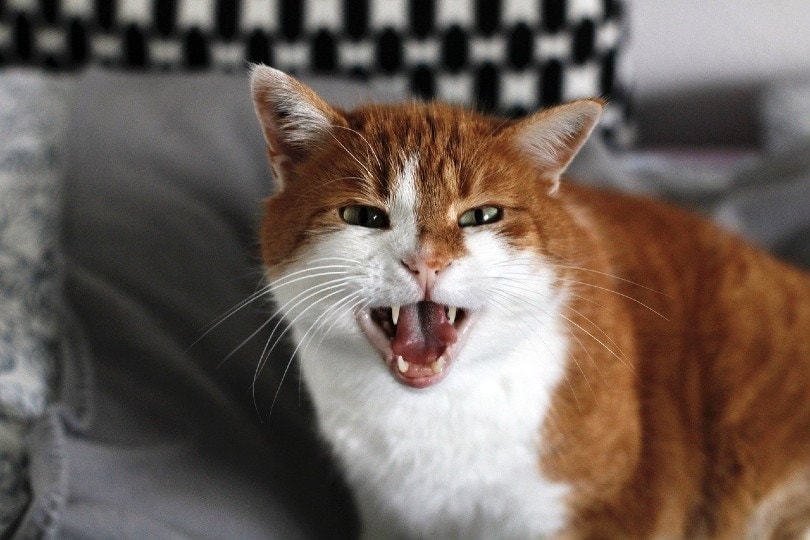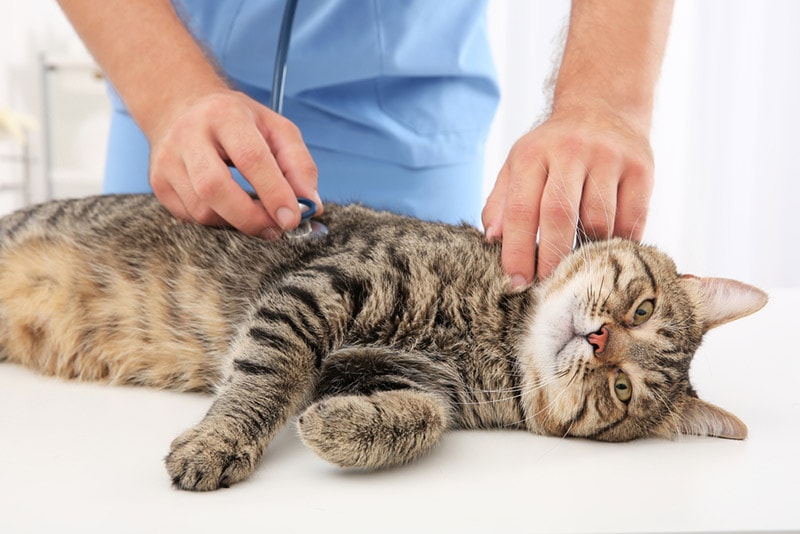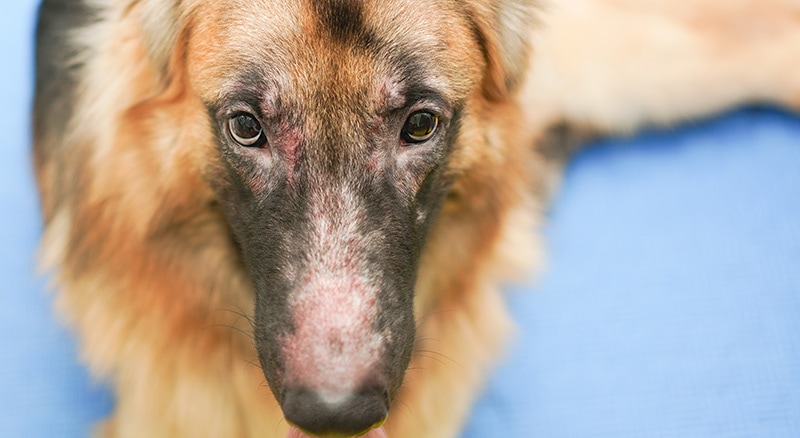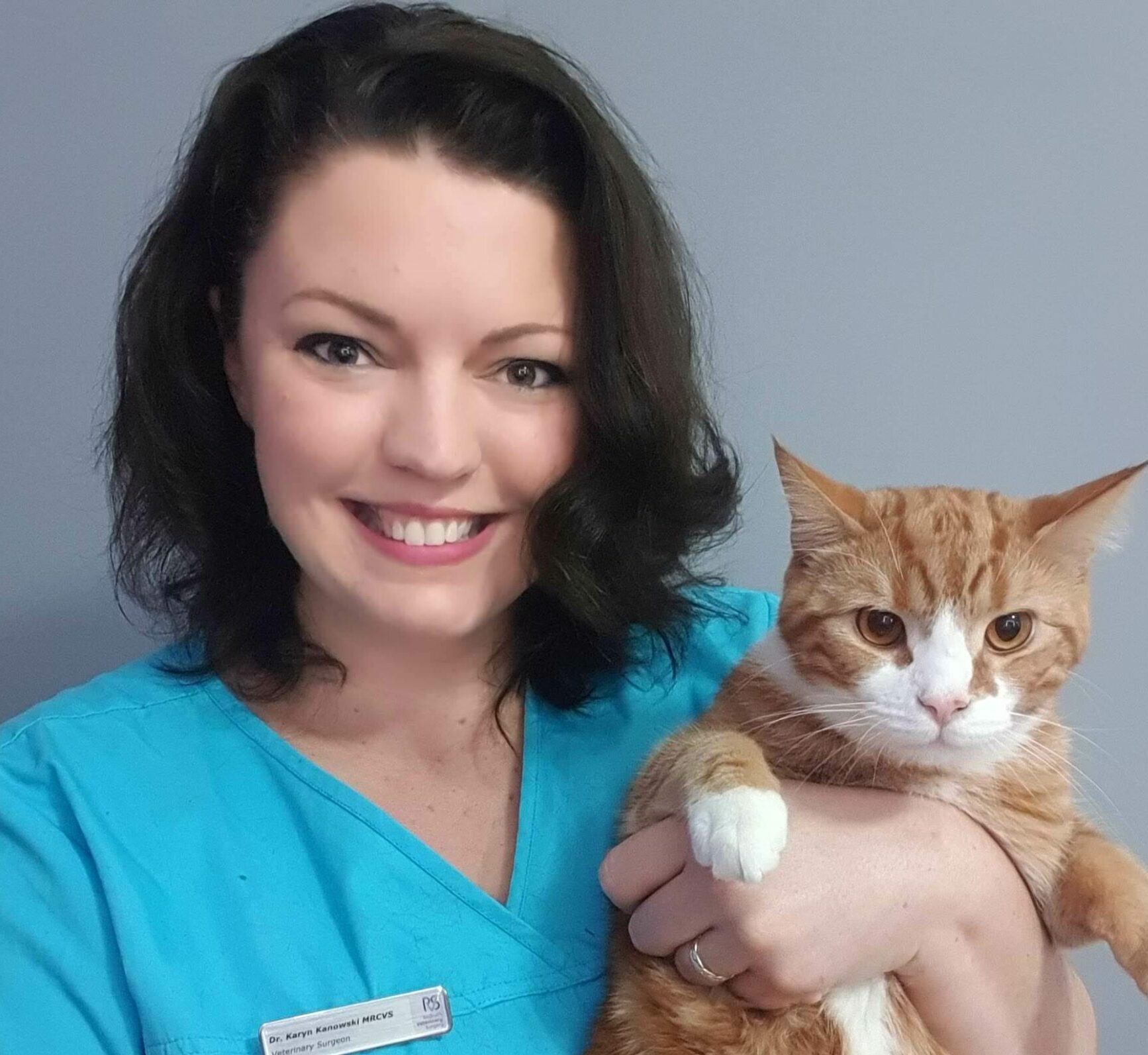Feline Hyperesthesia Syndrome: Causes, Signs & Care (Vet Answer)

Updated on

Hyperesthesia is an abnormal response to being touched. Cats with this syndrome are complex individuals. Only our precious cats would come up with something as wild as not enjoying a back rub!
To learn more about how this compulsive behavioral problem manifests, read on. We will discuss the syndrome, tools to help manage the problem, and the complications of dealing with mental health in cats.
What Is Feline Hyperesthesia Syndrome?
Hyperesthesia means too much (hyper) and sensitivity (esthesia). It usually affects the lower back, the area just in front of the tail and over the hips, the lumbosacral region.
Cats with this syndrome can have responses that vary from mild to severe. They can twitch after being touched or cry out and bite. Some can be so sensitive they react when a gentle breeze disrupts the hair on their back, and they run off panicking.
If the problem manifests severely enough, they can begin to self-mutilate their lumbosacral region. Self-mutilation becomes a vicious cycle. Their skin becomes even more sensitive and painful as they cause damage to it.
Feline hyperesthesia is still not fully understood, but the syndrome seems to have some element of compulsiveness, particularly if it is a chronic problem.
The compulsion starts by overreacting or overgrooming the area, and then suddenly, like a switch was left on by accident, they can’t stop. Compulsive disorders are difficult to treat and understand. They may be physical or mental, or both.

What Are the Signs of Feline Hyperesthesia Syndrome?
Feline hyperesthesia syndrome can vary from a twitch on their skin to scratching themselves after being petted to becoming overly aggressive, biting, and scratching their human. However they respond, it will be some combination of compulsively overreacting to external stimulation that touches them or compulsively overgrooming themselves.
The below list describes some of the behaviors you might see if your cat suffers from this syndrome:
- Overgrooming
- Biting and chewing their lumbosacral area
- Overreacting to being touched (hissing, flinching, running away, crying in pain, etc.)
What Are the Causes of Feline Hyperesthesia Syndrome?
The exact causes of feline hyperesthesia syndrome are unclear. It can start as a response to a physical problem, such as itchiness, but then become neurological hypersensitivity and compulsive disorder.
However, there are some common problems that trigger it sometimes. Problems that can trigger feline hyperesthesia syndrome include the following:
- Fleas
- Arthritis of the spine
- Painful tail
- Allergies
- Back pain
- Genetics (Siamese cats seem predisposed)
- Stress
When signs of hyperesthesia first start appearing, it is important to get a veterinarian involved as soon as possible. If the underlying cause can be easily treated, the syndrome might not manifest as severely or chronically.

The 2 Ways to Care for a Cat with Feline Hyperesthesia Syndrome
1. Fighting the Triggers
The first step is to get a veterinarian’s opinion on the issue. And together to rule out any underlying cause that you can treat. For example, if the syndrome starts after a flea outbreak together, you and your veterinarian need to treat the fleas and your cat’s allergic response. Only after that trigger is managed can you move on to treating or trying to treat the hyperesthesia syndrome.
2. Fighting Feline Hyperesthesia Syndrome
Medications may be helpful in treatment, but they are not your only tool. And honestly, they will not work as well if you rely exclusively on them.
As with many behaviorally compulsive disorders, there are several behavioral treatments that can help alleviate the symptoms. The list below includes some things to try. You might need to find a fluctuating, flexible combination of multiple tools that work for your cat:
- Interrupt overgrooming or self-mutilation
- Distract them from it
- Minimize stress (keep a regular schedule, reduce competition and conflict with other house pets, etc.)
- Provide a mentally stimulating environment with toys or outlets for normal behavior
- Monitor the skin that is being overgroomed for infections or soreness
Frequently Asked Questions (FAQs)
How can I help my cat who inherited the problem?
Even if this syndrome is genetically driven, getting a second opinion on hiding stressors in your cat’s life can help. A veterinarian may be able to provide insight into ways you can improve the quality of your cat’s life that you accidentally might overlook. Genetics and environment often go hand in hand.
How much does it cost to treat?
The cost of treatment will depend on the underlying cause. A flea allergy will be treated differently than arthritis. Even behavior-modifying medications will vary in cost depending on how much your individual cat needs.

Will it go away on its own?
Feline hyperesthesia is not likely to go away completely on its own, especially if there is an underlying problem triggering the syndrome. Its severity may vary, and it might seem to go away for a bit, but it often flares up again, persistently.
Why hasn’t the medication helped?
Every cat with hyperesthesia will respond to treatment differently, especially if the compulsive component is strong. There are different approaches to treatment and different medications. Each cat will respond to medication differently. Finding the right treatment may require a period of trial and error.
Often with compulsive disorders, the severity of the syndrome varies with time. Stress and daily triggers can aggravate or soothe the syndrome. So be prepared for the treatment to work better on some days and worse on others.
On worse days, be prepared with other tools that reduce stress and provide outlets for anxiety. For example, be prepared to distract them with toys or other fun games on stressful days.
Conclusion
Feline hyperesthesia syndrome can be frustrating to treat. It requires patience and constant monitoring and management. There is often not one single cure. But multiple tools together help.
While it may seem overwhelming, persistence and multiple consultations with a veterinarian will help. A cat with this syndrome may seem high maintenance, but they often just need a little extra love to live a happy, healthy life.
Featured Image Credit: Cottonbro, Pexels














